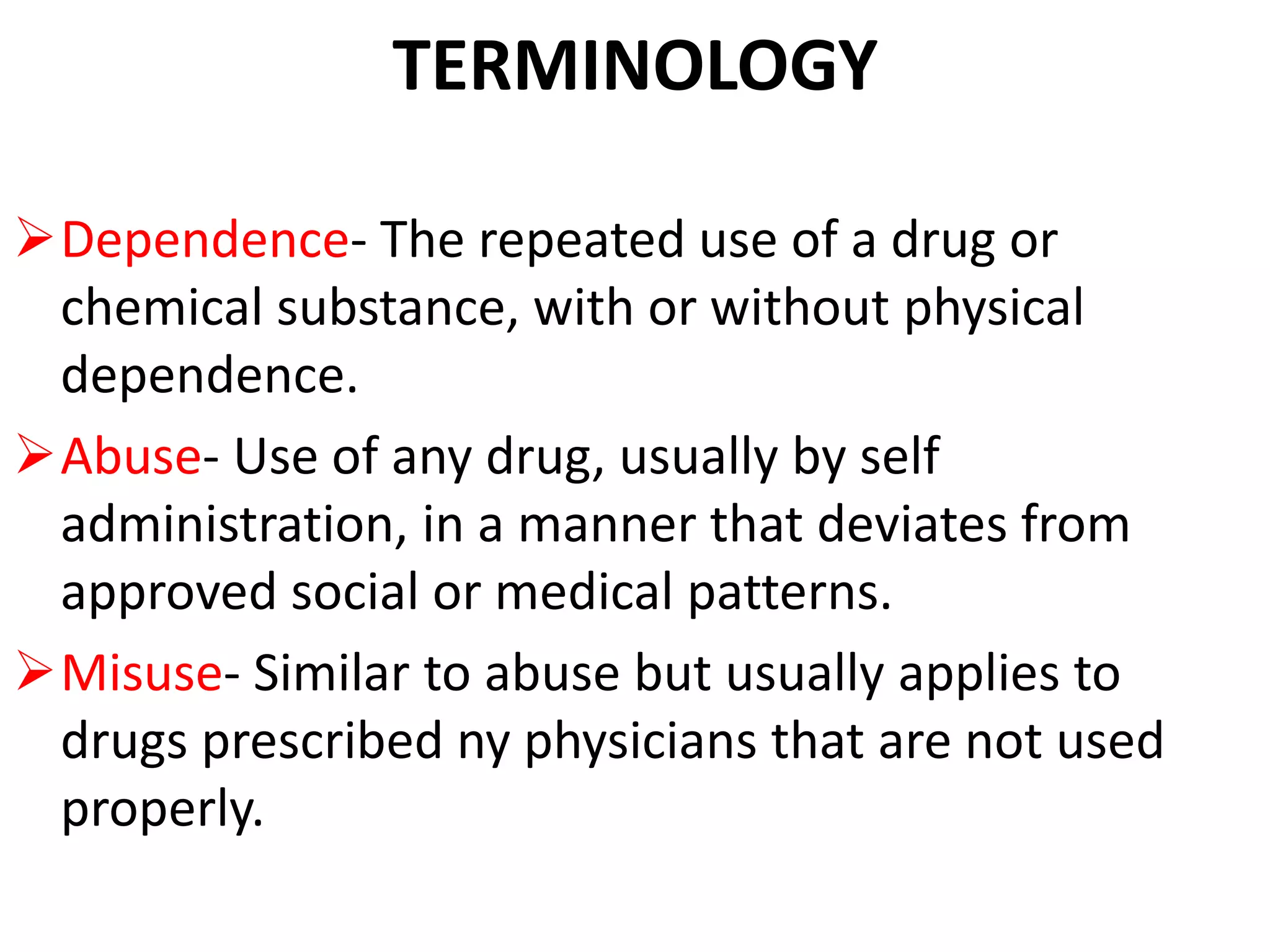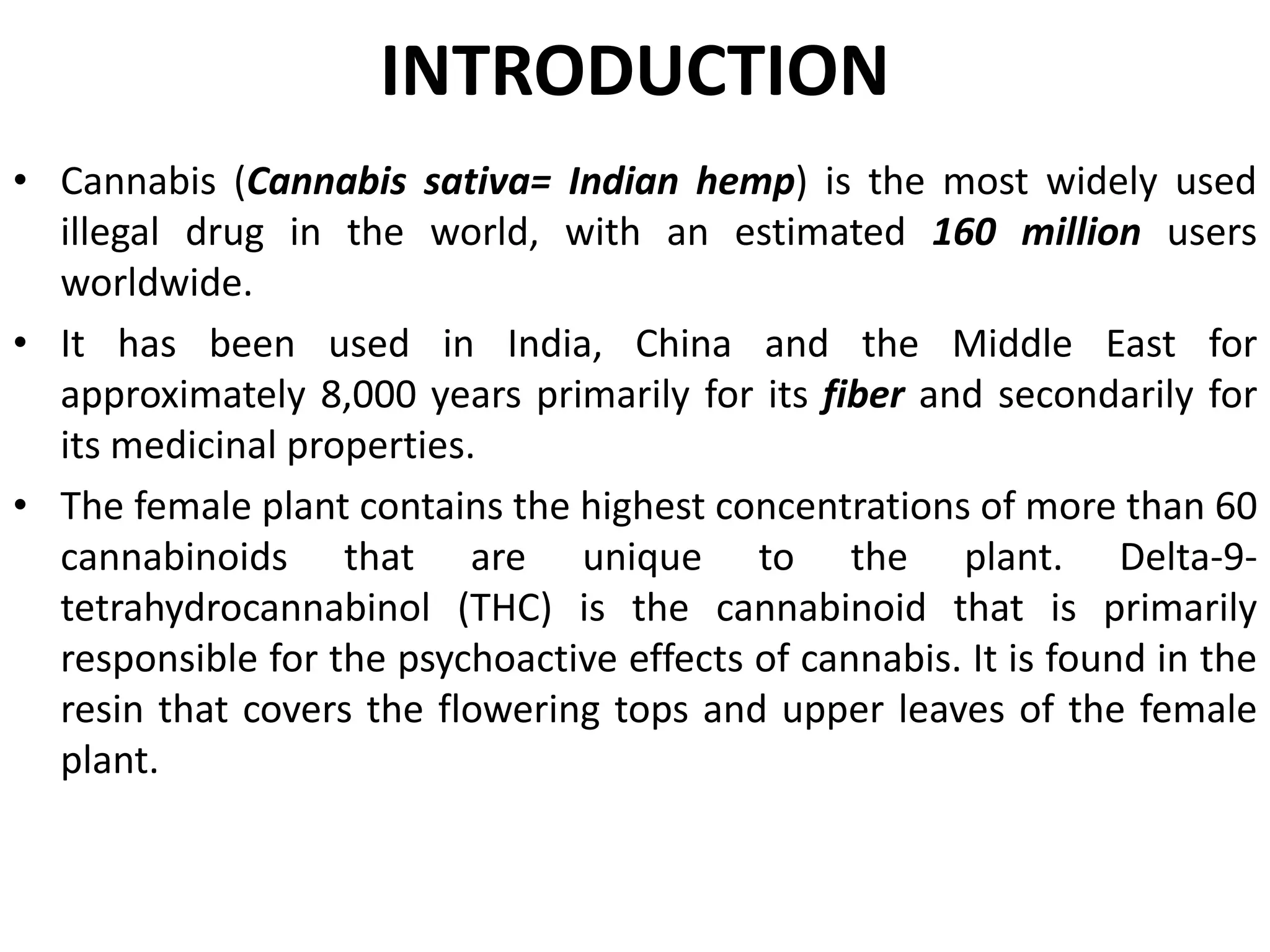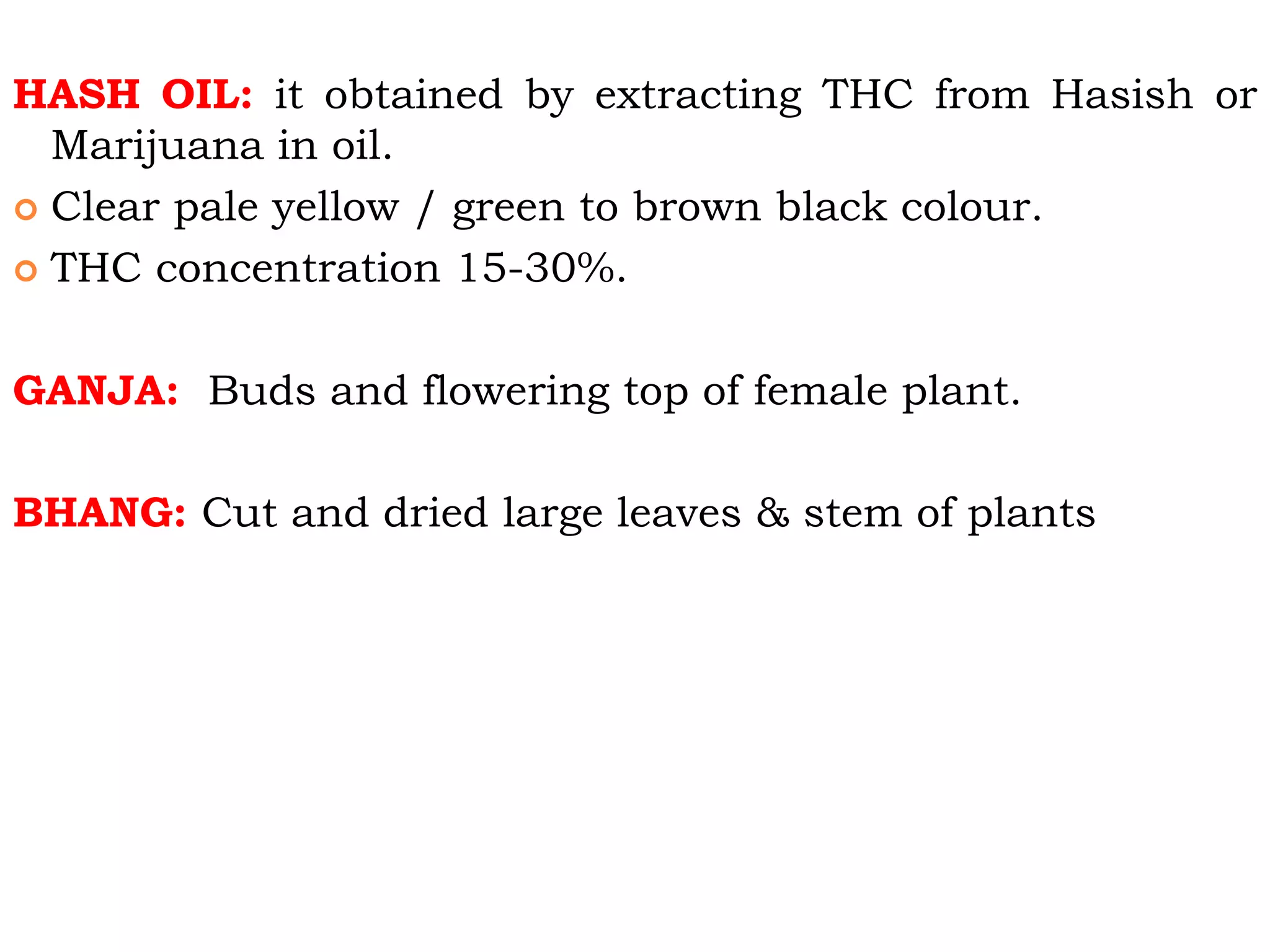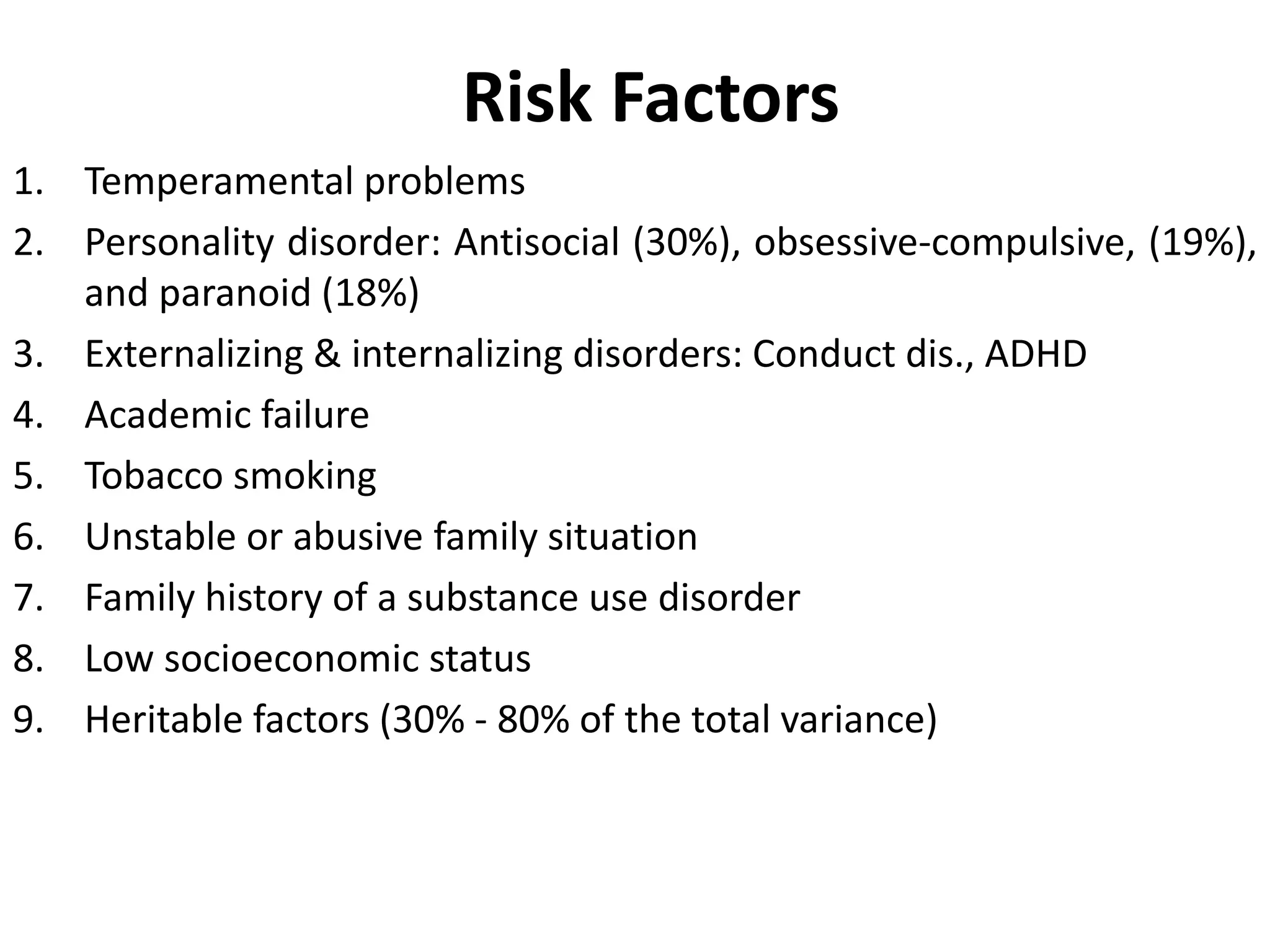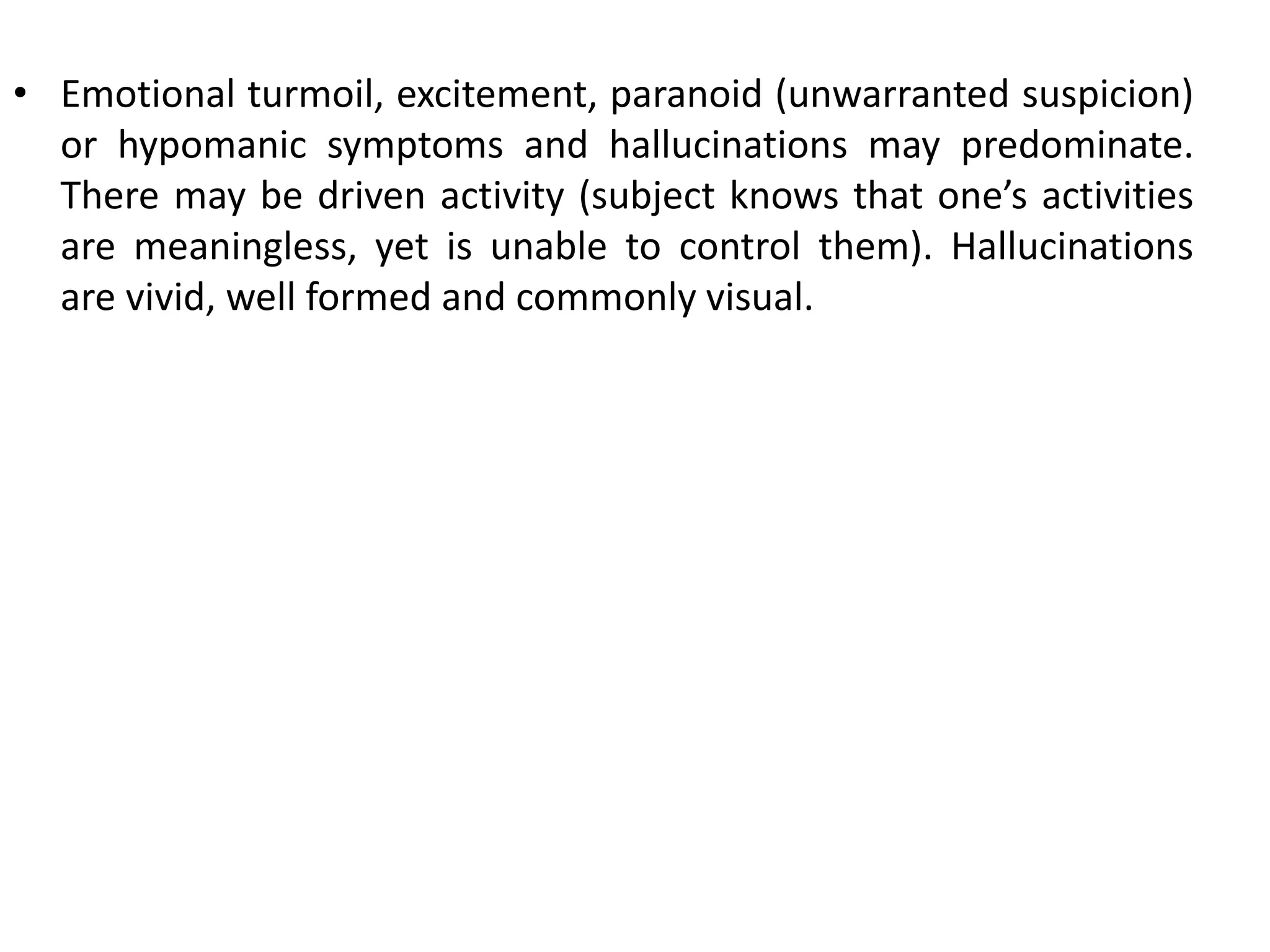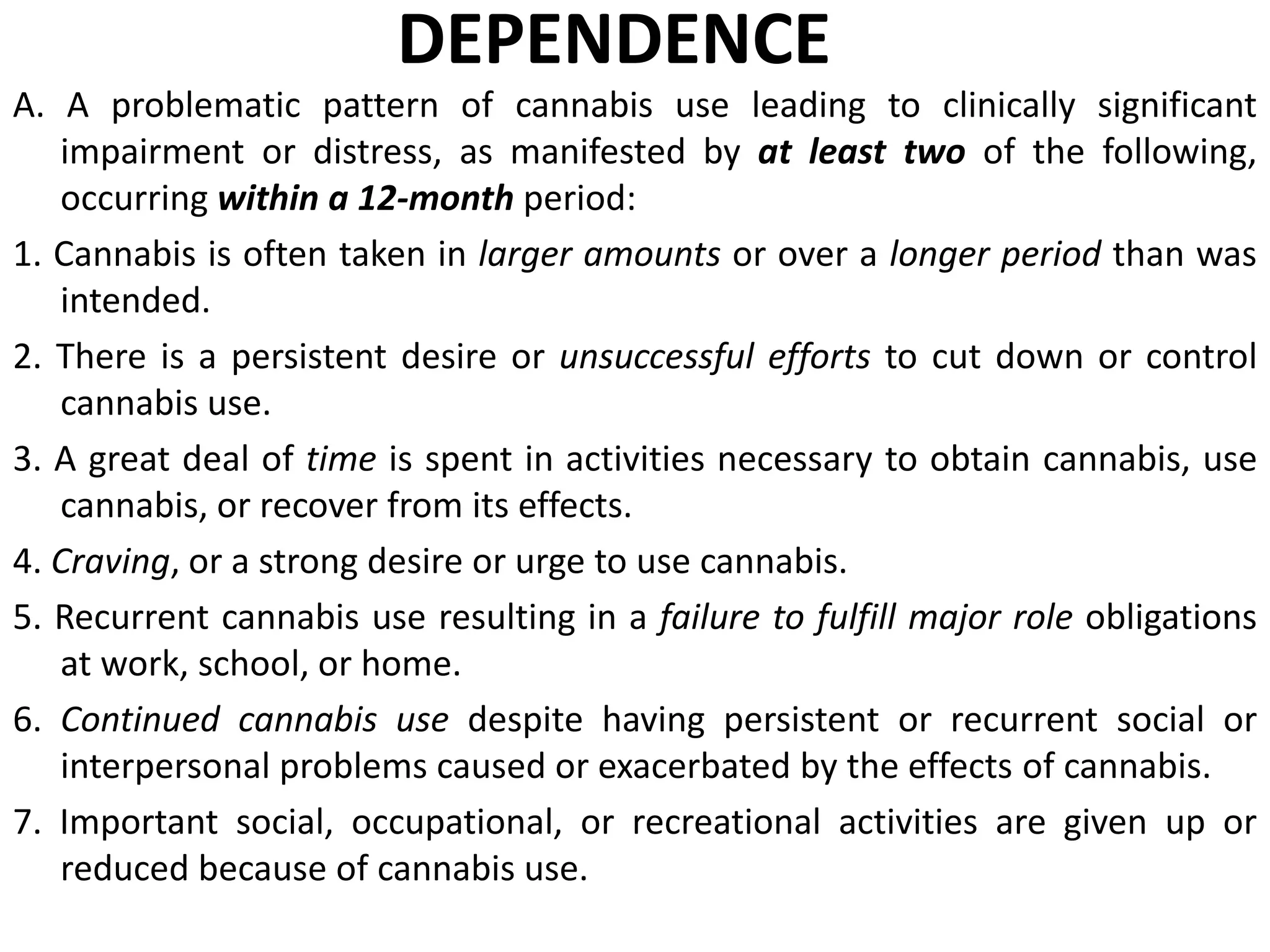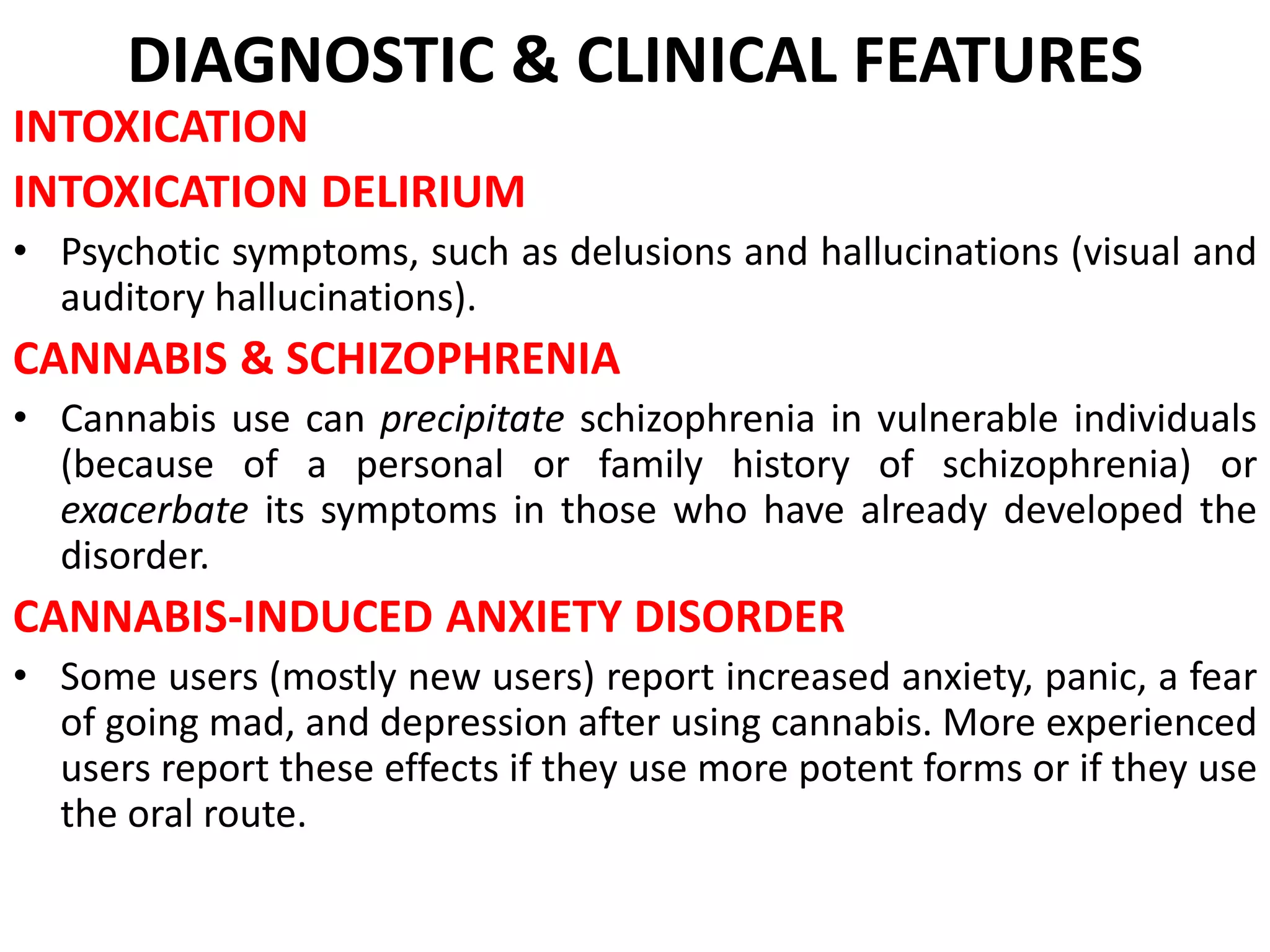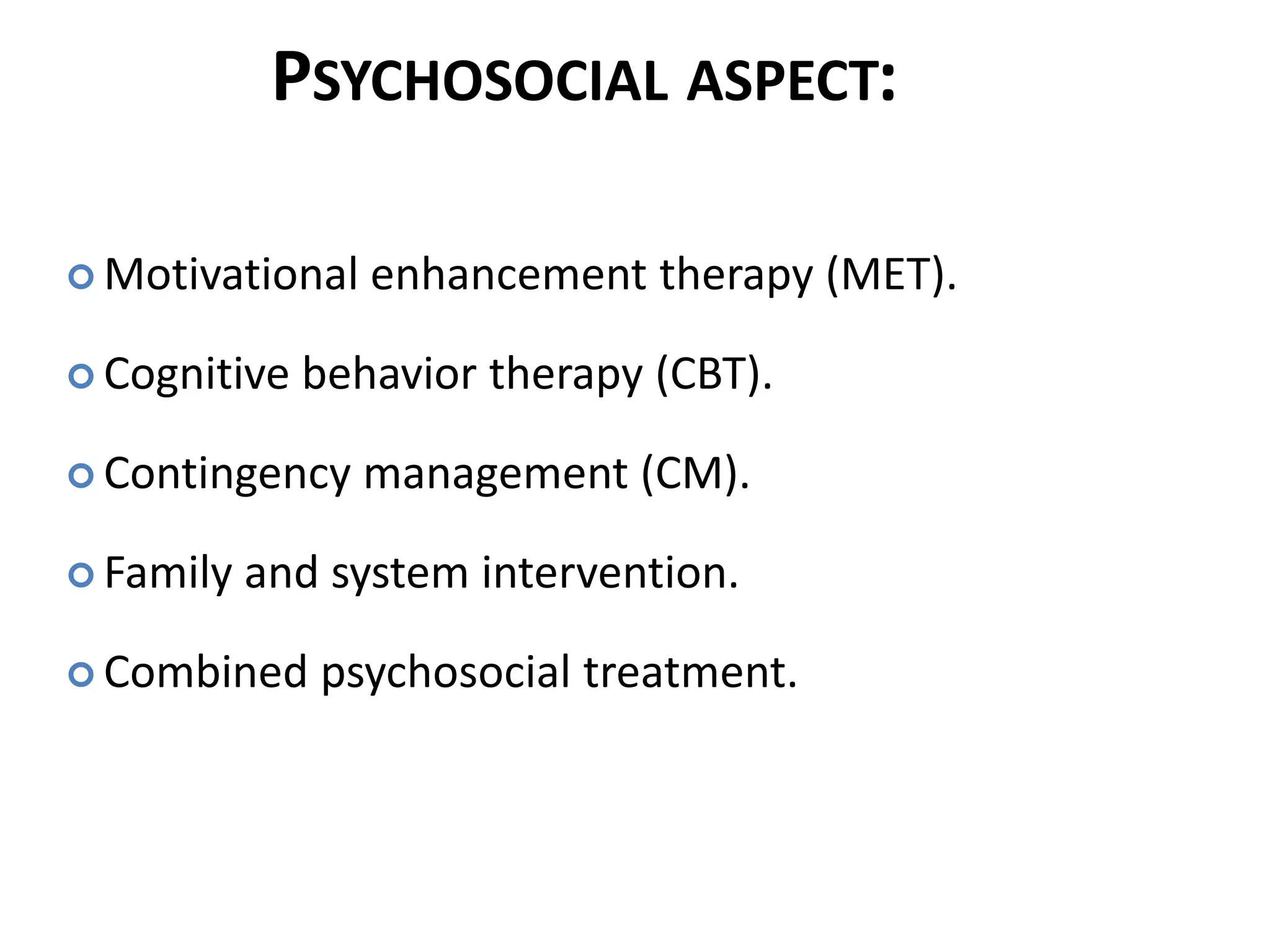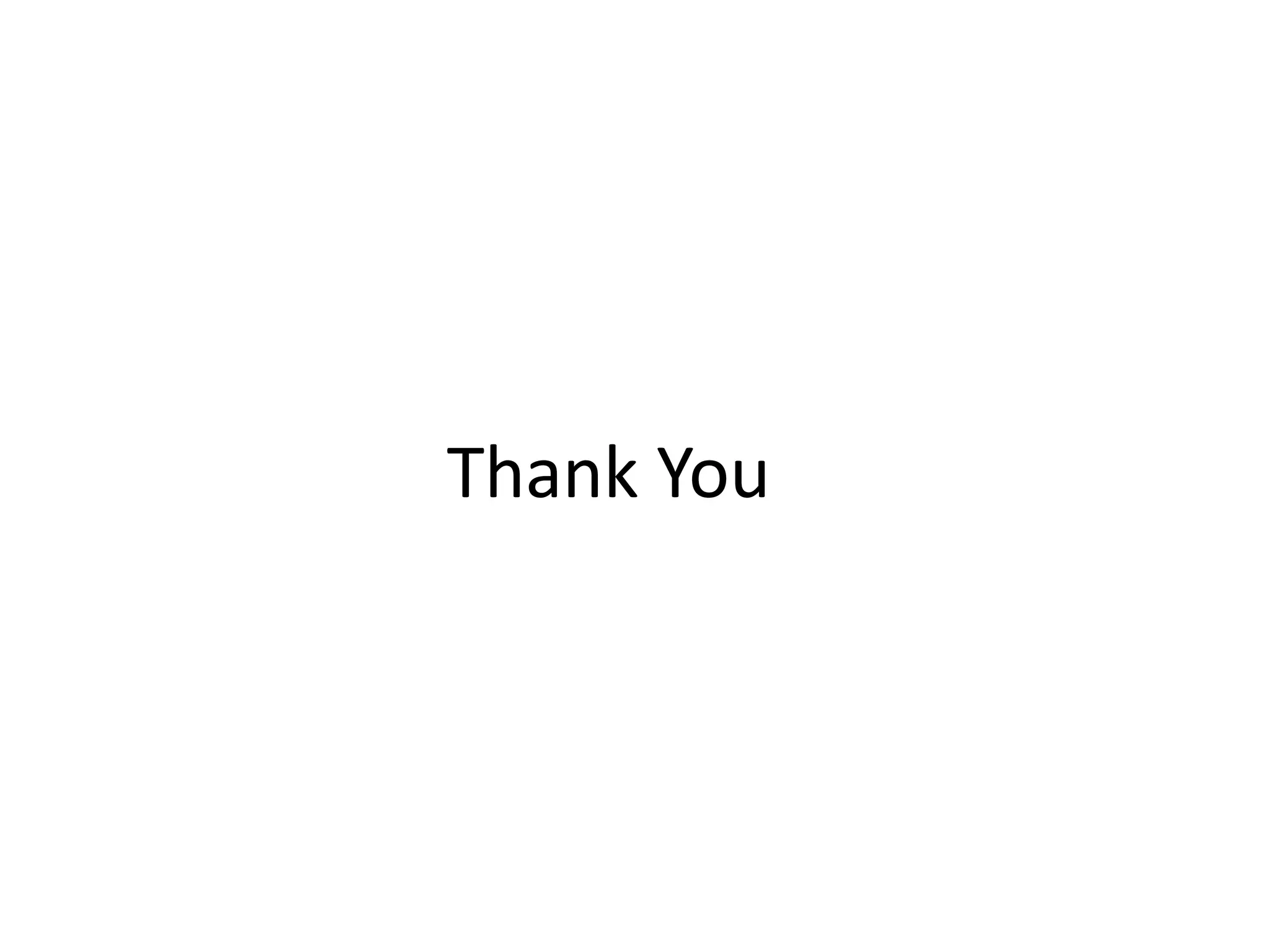This document discusses cannabis use disorders and substance use disorders involving cannabis. It defines key terms like dependence, abuse, intoxication, and withdrawal. It describes the major diagnostic categories from the DSM-5 involving substance use disorders. It then discusses cannabis specifically, how it is prepared from the plant, its effects, and diagnostic criteria for cannabis intoxication, dependence, and withdrawal from the DSM-5.

